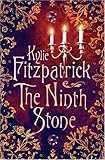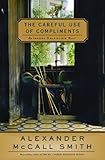Since posting the stories to my blog yesterday, and after speaking again to my long lost cousin on the phone today, I realised that I had asked my mother to write down for me her memories of the 2nd World War.
When Fred and I were talking, he mentioned that his father spoke of the war days, and being in the AMP Building in Brisbane, when General Macarthur was there. My mother had also mentioned this incident as well and I thought I would post her recollections:
"War is a very frightening concept for an adult, but for a 12 year old schoolgirl, it is devasting. Over the next few years I was about to have my mind blown away by the atrocities of war and the devastation of countries and human beings.
The realisation of those times and the inhuman acts that are "war" perpetrated by the Japanese and Germans will be forever etched in my memory. Whatever you read in novels and what even movies you see, believe me it actually did happen.
The Genocide of the Jews was the most inhuman of all.
I can remember reading Ann Frank's book and being brought to tears, and also saw many movies on the war and the French Resistance. They were my idols and if I had been older, there was no way I would not hve been over there with them. They were very brave people.
Then to try and start at the beginning as I remember it - I think my first recolletion was of the "call-up". Thank God I had no older brothers as they assuredly would have been conscripted, but I had 3 uncles and my father.
One uncle was taken in as a cook, another was left to his job, as he and my other uncle and Grandmother were caretakers of the A.M.P. Building in Brisbane.
He was flat footed anyway and they did not want him and the last one, my uncle George was taken in for training.
To me he was the most unlikely one to go for he had a gentle demeanour, and the most unhealthy. But that deal soul was sent to New Guinea for the duration of the war. It wrote to him many times, pouring out as much love as you can in a letter, for his wife died in child birth, and I felt it was up to me to lift his spirits. He lived in a tent in that mosquito infested rain-forest with snakes abounding, with malaria and the knowledge that there were Japanese very near at all times.
They determined that my father would be best placed at the aerodrome at Archerfield. He stayed there for the remainder of the war, working on the planes.
In this time with men being shipped away, the women had to take over and man the factories and the munitions. Nothing was made from steel and rubber. These all went to the war effort.
They drove ambulances and transports; they all worked for the same reason - to manufacture and support Australia and the troops that were fighting. Many women joined up in the Forces and became nurses, sailors, drivers, ambulance drivers for the front lines, mechanics and tea ladies. Many worked in secret surroundings with telecommunications. This went on 24 hours a day and some of the centres were top secret. One I found out later was in a garage.
Even my grandmother worked at sorting clothes parcels 2-3 days a week. Remember that the men had all been taken away, some leaving families behind. Themother had to go to work to help support the children. These clothes parcels were one effort to try to help families because there was very little you could buy. Women stepped into their new role without hesitation.
My mother worked in the neighbourhood fruit and cake shop and continued to do so after the war. There were not enough men to man all of the shops.
During this time, food was rationed and everyone had coupons for meat and butter. You had to make do for there was a shortage of everything. Absolutely everything went to the war effort.
You could not buy most things, not even a pair of sandshoes or a basket ball. My grandmother managed to procure me an old pair of sandshoes through the clothes sorting where she worked. They had holes in both the soles, but I can still remember them as being my prized possession and had to continually place cardborad cut-uts in the bottom of the shoes. I wore them for the continuance of the war and was proud of them.
Many a meal consisted of bread and dripping with salt, depending on the flavour of the dripping. We became quite accustomed to this. We had blackouts of course, and had blankets up to all the windors. No home could show any lights in case of an air-raid. They had air-raid wardens on patrol all the time. Air-raid shelters were built in different locations for the residents and my school had trenches dug around the perimeter of the playing fields. We had air-raid drill at school and when the alarm went, we had to go to our place in the trenches. Mymother had decided that she would rather me be with her and my family in case we had a bombing, so I had to come home when and if an air-raid eventuated. One day there was an air-raid and I had to run 4 1/2 blocks home. It was one of the most frightening times of my life, as I was the only person on the road - everyone was in shelters. As all I could think about ws that at any moment, the Japanese would be flying overhead and I would be a good target.
But I reached the shelter completely out of breath, and it was a false alarm.
Many people built their own personal shelters in their backyards. My uncle was one of them. He dug deep into the back yard and covered it with cement. He stock-piled tin food and water and kerosene lamps, blankets and emergency items. But thankfully it was never used.
Now in this time with Australia very vulnerable, and very little protection, America sent forces here to protect us. There was quite a large contingent, and many were stationed quite near to us at New Farm. We lived in Sydney Street, and opposite the park. Near the park there were large sheds, I think they were motor body works. Here they were billeted and their fleet was positioned all along the river.
There came a time when there was a U-Boat in the Brisbane River and residents like us, who were close to the area, were asked to leave. We moved to Clayfield as a precaution and stayed 12 months, before we came back to our beloved New Farm.
The American soldiers were never any trouble. They were always impeccably dressed and very well mannered. They were just young boys, lonely and a long way from home.
They used to spend a lot of time with the family next door and even with the houses quite close, Icannot remember that they were ever very noisy or out of hand. They used to give me boxes of sweets whenever I saw them. There was never any fear when my girlfriends and myself walked home from the movies, and the area was always peaceful.
They used to play baseball on the oval in the park every Sunday and this attracted crowds. The residents loved it and they always had a smile for the American boys, for they were very well behaved. Their General Macarthur had his offices in the AMP Building. In fact they took over the whole building. My grandmother and uncle still stayed there as caretakers.
There were armed guards on the doors and you had to have a pass to get in. I used to go in by the side door in Edward Street and many the time I drove General Macarthur upto his floor in the left, when I ws going to the top to see my grandmother. In those days, the lifts were manual.
Remembering now those days at New Farm - Sunday was a busy day in the Park. What with the baseball and the military band playing in the rose garden - the whole park was always packed and never lacked colour. It was certainly the place to be on a Sunday.
When the atomic bomb ws dropped on Hiroshima, we saw it on the news at the picture theature, but being a child, I only thought of the fact that it was over and didn't in those days, think of the repercussions for the Japanese people. Later on, watching the newsreel at the cinema, it dawned on me what a cataclysmic event it must have been. (there was no T.V in those days). All news was shown at the cinema, before the movie of the night.
There were many more parades in those days. But the one through Queen Street when war was declared over was something to be seen. Everyone turned out and I have never seen so many streamers and balloons. I had a front row seat on the sill of the 1st floor of the AMP Building, which by this time was empty"
The people that Mum spoke of, are the ones in my previous posts. Her grandmother being Lillian Adams, the uncle who went to war, was George Greig.





 Ninth Stone by Kylie Fitzpatrick
Ninth Stone by Kylie Fitzpatrick





 White Gardenia by Belinda Alexandra
White Gardenia by Belinda Alexandra

 Burmese Days by George Orwell
Burmese Days by George Orwell The Careful Use of Compliments by Alexander McCall Smith
The Careful Use of Compliments by Alexander McCall Smith





